Introduction: Exploring Hazardous Weather Patterns Across the US
Every day, somewhere in the United States, some sort of hazardous weather is occurring. The vastness of the nation—from the Arctic Ocean coastline to the tropical beaches of the Florida Keys, to the mountain peaks of the Western United States, to the volcanos in Hawaii, the inhospitable deserts of the Southwest to the eastern shores of the Great Lakes—covers diverse climates and geographical weather patterns. In turn, the weather experienced across different portions of the United States drives local economies (such as agriculture, fishing, shipping), cultures (such as clothing, day-to-day activities, employment, hobbies, and interests), and politics (largely based on culture and economy).
In this article, we discuss some of the most hazardous weather events by geography in the United States, and why considering these various types of events is important for understanding underwriting risks and handling post-storm insurance claims. Ultimately, the following information may be of particular interest to insurance and reinsurance carriers exploring new geographies to conduct business, as well as claims adjusters and managers that handle complex storm damage losses from coast to coast.
Coastal Weather Patterns: Hazards & Challenges Along the West Coast
The West Coast of the US is generally considered Coastal California, Coastal Oregon, Coastal Washington, as well as Coastal Alaska. Why only the coastal regions of these states? Largely because of mountains only a short distance inland which create a significant change in climate zone, clearly separating weather on the windward side from the leeward side.
Probably the most discussed hazardous weather events across most of the West Coast are heavy rainfall and flooding. These can combine with high ocean tides and large surf in low-lying areas, leading to water inundation similar to storm surge seen during hurricane activity on the US East Coast. In fact, in the past 10 years, there have been more reported days of flooding in California than in any other state.
Rather ironically, wildfires are also of serious concern along the West Coast. During rainy seasons, significant plant growth occurs. However, when the dry season hits—especially in times of drought—what was once lush and green turns into abundant dry fuel for wildfires. In many of these cases, the mountains inland also influence the weather in the region by funneling hot, dry air directly into major metropolitan areas (the Santa Ana winds are some of the most well-known). In some cases, this results in required evacuations due to wildfire risk, but also promotes significantly reduced air quality.
Insurance carriers should be aware of increased risks of flooding, wildfires, and mudslides along the West Coast. While in recent years California has significantly increased its weather station count, it is important to remember that weather conditions along the West Coast can vary widely, even across a short distance. This is largely due to terrain resulting in elevation changes and directional exposure considerations.
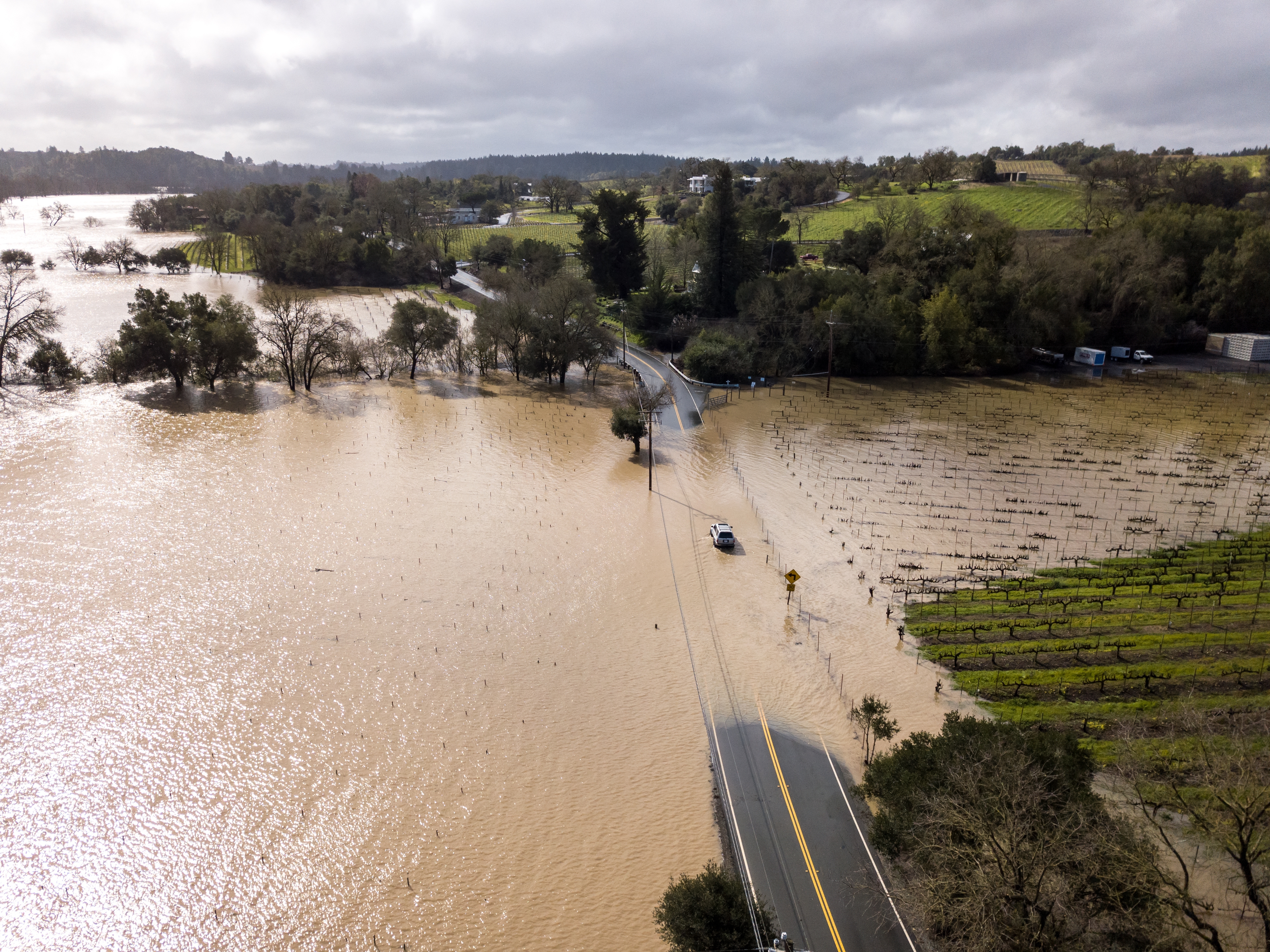
Figure 1 – A flooded road in California.
Weather Dynamics & Insurance Risks in the Intermountain West
The Intermountain West is a large region in the Western US that arguably spans from the Alaskan interior through segments of British Columbia and Alberta (Canada) into the eastern parts of Washington, Oregon, and California, as well as portions of Nevada, Arizona, New Mexico, Colorado, Utah, Idaho, and most of Western Wyoming and Montana. There are many microclimate regions across the Intermountain West, including barren high deserts and towering mountain peaks, including places like the Great Basin, the Sierra Nevada, the Cascades, and the Rocky Mountains.
Common weather concerns in this region—which is marked by high elevations and often remote, desolate expanses—include brutally cold wintertime temperatures, heavy snow and freezing rain, extreme winds, and wildfires. Over the past 10 years, the top five states with the most heavy snow reports in the US (according to data from the National Weather Service) were located in the Intermountain West region. Likewise, four of the five states with the most non-thunderstorm-related high winds were found in this region.
Of particular interest in the Intermountain West region are weather effects on the brink of the Great Plains, especially along the Colorado Front Range, but largely across the entire eastern slope of the Rocky Mountains. This area of the nation is prone to powerful down-sloping wind conditions known as Chinook Winds, which not only can be hazardous to people, property, and transportation, but can also aid in wildfire spread, such as during the Marshall Fire in 2021.
Much like along the West Coast, insurance carriers should consider increased wildfire risk across the Intermountain West. However, keen awareness of potential losses resulting from heavy snow loads, prolonged freezing temperatures, and extreme winds is encouraged. Much like the West Coast, significant variations in each of these conditions may occur over short distances, largely due to terrain, elevation, and exposure effects. Therefore, nearby weather stations may or may not be representative of a loss location, depending on the peril.
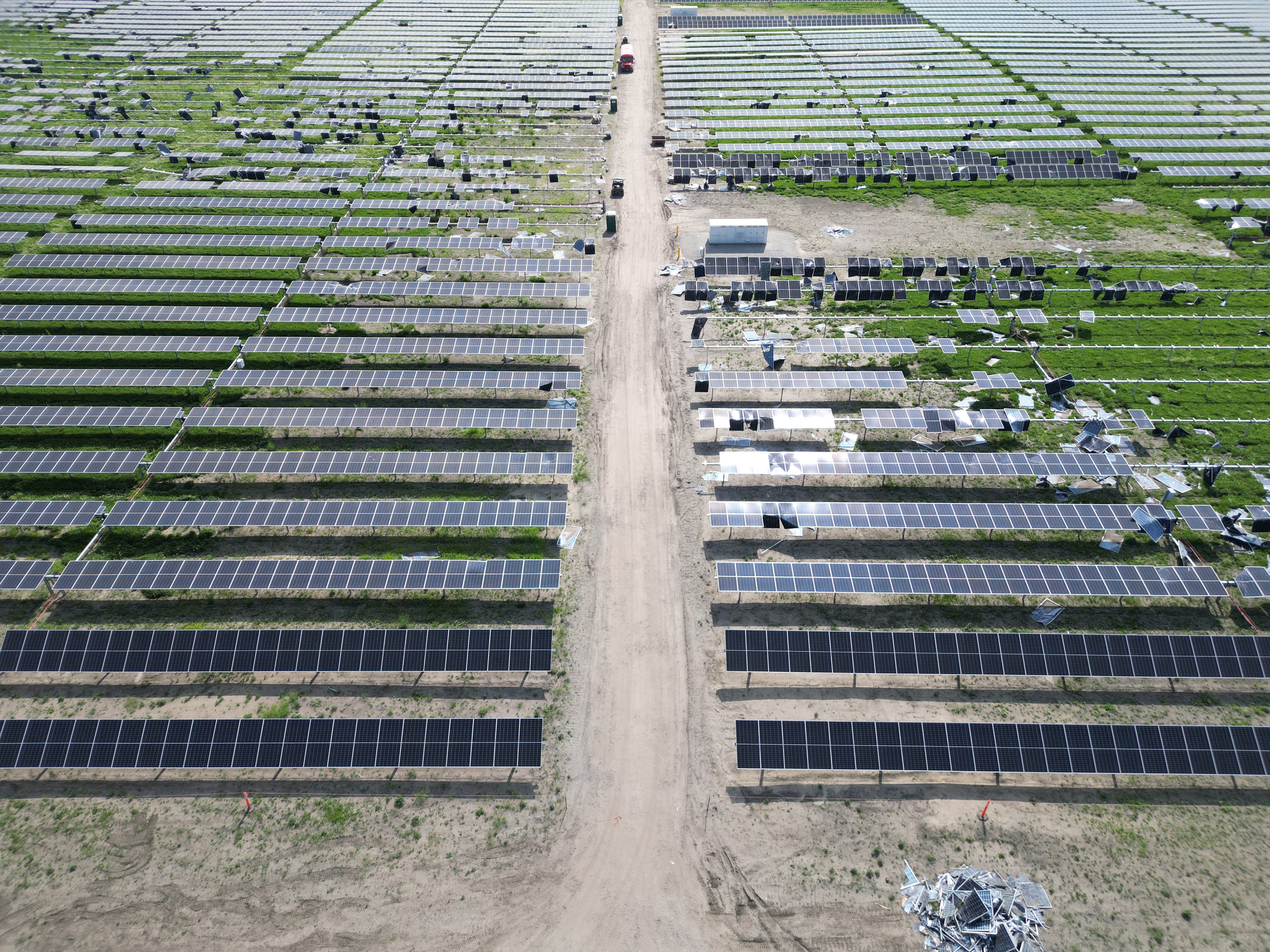
Figure 2 – High wind damage to a solar panel farm.
The Extreme Heat & High Winds of the Desert Southwest
The Desert Southwest is an arid portion of Southern California, Southern Nevada, Southern Arizona, Southern New Mexico, and parts of West Texas, and is known for intense weather, especially heat.
Heat causes more fatalities in the United States than any other weather event, and the Desert Southwest is home to heat. However, generally comfortable early morning temperatures frequently promote a false sense of confidence to many outdoor enthusiasts who hike into the desert and become overtaken by sizzling mid-day temperatures and quickly drain their insufficient water resources. Likewise, in many unfortunate circumstances, young children, elderly, and pets are often mistakenly left in parked vehicles during the summertime without sufficient ventilation and perish due to extreme heat.
High winds are also common, especially during the Southwest monsoon, which usually occurs during the summertime and can result in blinding dust storms (known as haboobs). These pose a significant threat for transportation, much like driving in thick fog, but with the added factor of high winds.
Insurance carriers operating in the Desert Southwest should be most aware of casualties regarding heat, as well as perils involving high winds, dust storms, and occasional flash flooding. These perils are most common during the summer and early autumn months. It is also important to consider that in the Desert Southwest, storm perils such as high winds, dust, and flash flooding may occur far away from the parent storm, sometimes in the absence of a single raindrop at a loss location.
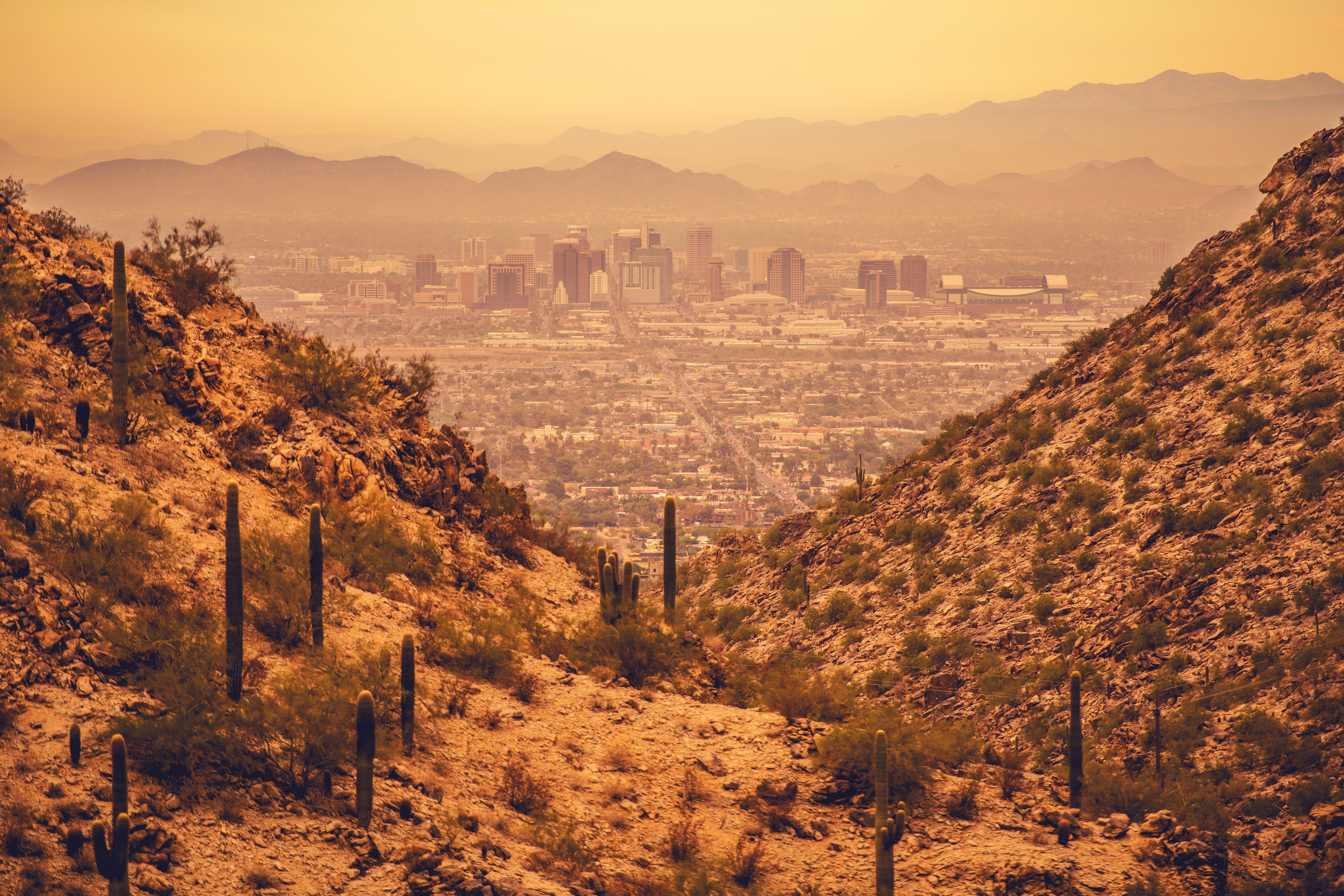
Figure 3 – Haze over Phoenix, Arizona on a hot day.
Navigating the Weather Patterns of the Great Plains
The US Great Plains make up another large region in the central part of the nation, stretching from the Canadian border with Eastern Montana and the Dakotas southward to Texas. This area is usually subdivided into three smaller ones—the Northern Plains, Central Plains, and Southern Plains.
There are often distinct seasons across this portion of the US, though it is common to experience several of those “seasons” on the same day, especially during the spring and fall. Harshly cold wintertime temperatures are well-known across the Northern Plains, while excessively hot temperatures are well-known during the summer in the Southern Plains.
The Great Plains are also home to a transition from arid, high-altitude plains in the West (such as Denver, Colorado and Cheyenne, Wyoming) to lower-lying, more humid plains nearing the Missouri River. This gradual but noticeable climate zone transition promotes severe thunderstorm activity; hence, the features Hail Alley and Tornado Alley both exist in the Great Plains. During the early springtime, severe weather is common across the Southern Plains, then moves northward in the summertime into the Central and Northern Plains, before moving back southward during the fall. The largest hailstone on record was recorded in the Great Plains, in Vivian, South Dakota (8.0 inches in diameter).
Insurance carriers conducting business in the Great Plains must be especially aware of a wide variety of wintertime perils, as well as severe weather conditions. Prolonged freezes and heavy snow loads can occur across the Great Plains, even as far south as Texas. Other perils like drought and wildfire, especially in the agriculture sector, are wise to consider. Likewise, large hail and violent winds can occur. Claims adjusters should be warned that automated weather reports following severe weather can be significantly unrepresentative of the true hail and wind conditions.
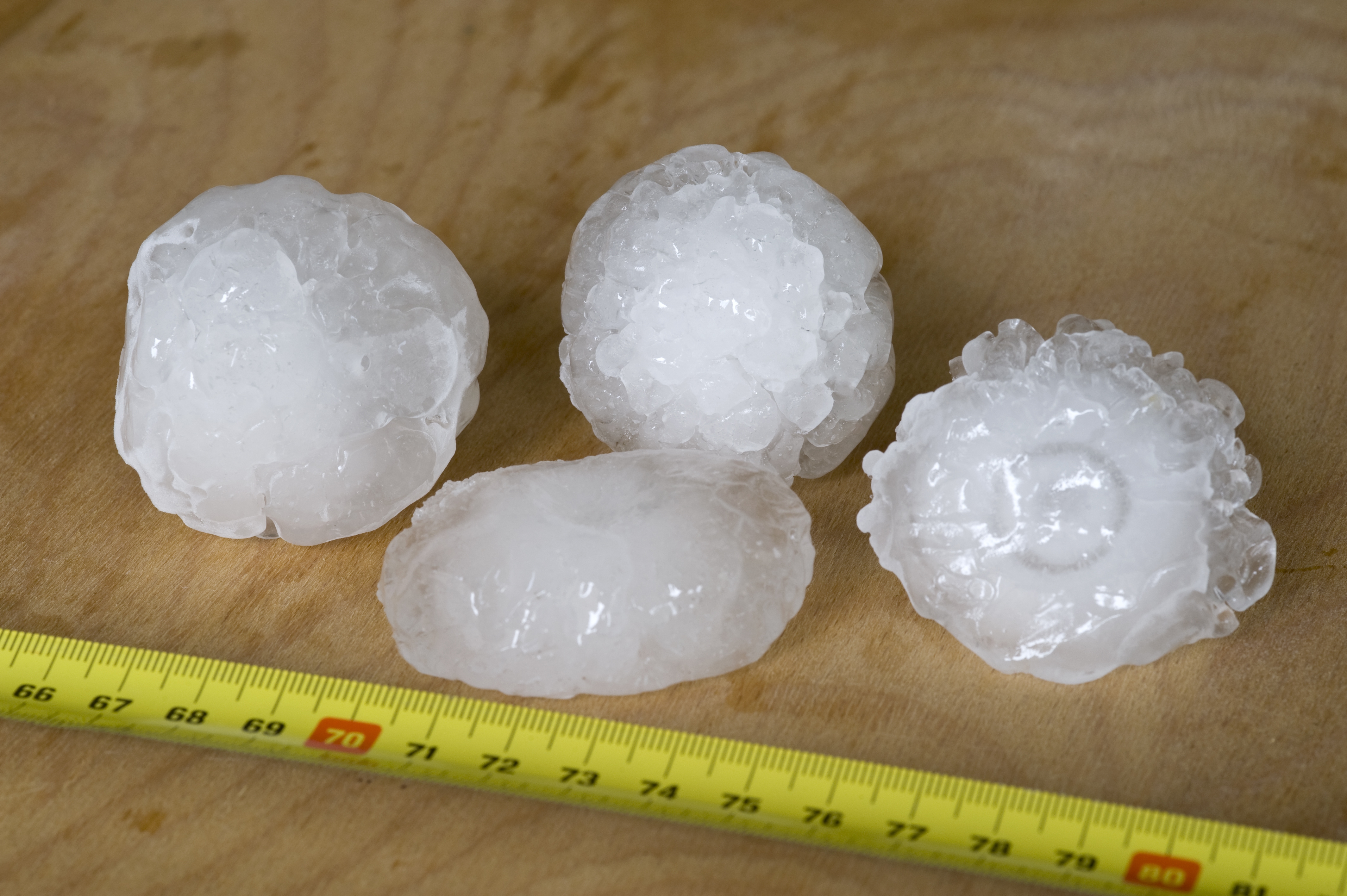
Figure 4 – A cluster of large hail stones.
The Impact of the Midwest’s Extreme Weather on Insurance
The Midwest’s core generally encompasses the north-central portion of the United States, largely states bordering the Western Great Lakes, but reaching southward into Iowa, Missouri, and portions of Kentucky.
The Midwest is also known as the nation’s Heartland, home to dense farm fields. Weather forecasts, including long range climate outlooks, are of utmost importance to residents of this region. The Midwest is known for radical temperature swings, particularly in the spring and fall months when it is not unheard of to experience a 50-degree swing over a 24-hour period.
The summers in the Midwest start mildly, but quickly the effect of crop growth makes its presence felt in July and August, sharply raising the dew points and overall humidity levels. Combined with warm summer temperatures, this elevated humidity promotes severe weather, including tornadoes, strong winds (including derechos), and severe hail.
Spring and fall are generally transition times in the Midwest as opposed to full “seasons.” Snow and severe weather, including tornadoes, can happen in both seasons as well, along with rapid temperature fluctuations and multiple episodes of gusty winds as weather fronts come and go.
The Midwest also deals with all sorts of winter hazards including blizzards, extreme bouts of cold, and ice storms.
As in the Great Plains, insurance carriers conducting business in the Midwest must be especially aware of a wide variety of wintertime perils, as well as severe weather conditions. Drought conditions in the agriculture sector should also be considered. Severe weather conditions such as high winds and hail are routine in the Midwest, and claims adjusters should be warned that automated weather reports following severe weather can be significantly unrepresentative of the true hail and wind conditions.
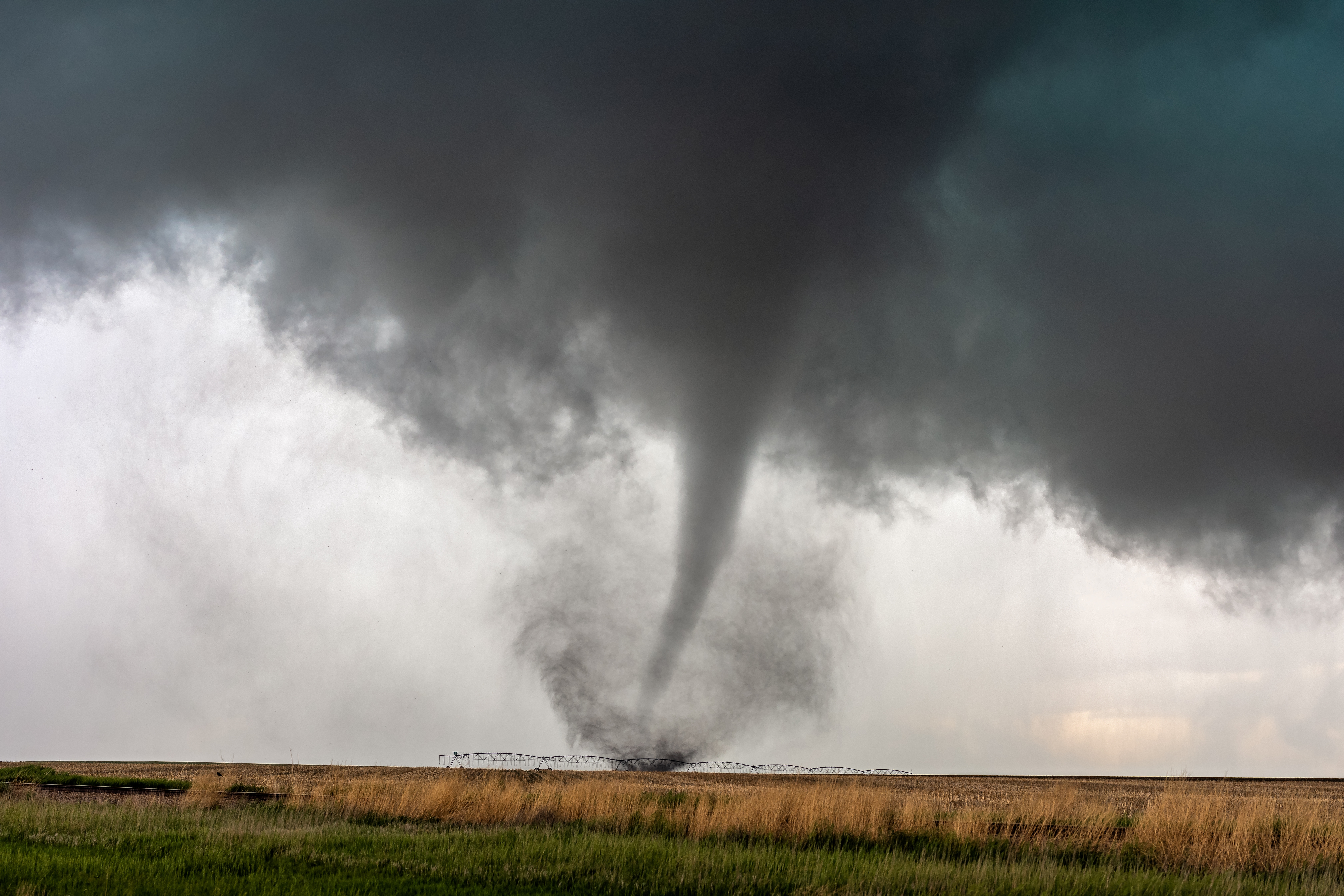
Figure 5 – A tornado passing through a field during a severe weather event.
Weather Risks Across the Southeast United States
The US Southeast generally includes states which border the Gulf of Mexico (portions of Texas may be considered the “Southeast” by some), as well as states such as Arkansas, Tennessee, Georgia, the Carolinas, and, arguably, portions of Kentucky and western Virginia.
The Southeast is home to some of the nation’s most destructive weather. In recent years, violent tornadoes have taken aim at the Southeast, so much so that a secondary “Tornado Alley” has been named in this part of the country, known as Dixie Alley. Wintertime (“cold season”) severe weather is somewhat common in this area of the country.
Due to its frequent rainfall (notably during the warmer months), the Southeast is also no stranger to flash flooding, especially in more rugged terrain areas of the southern Appalachians, including the Cumberland, Smoky, and Blue Ridge mountains into the Cumberland Plateau.
Tropical cyclones (including hurricanes and tropical storms) are also frequent in this region from the Texas gulf coast to Florida, and north along the Atlantic seaboard. These events take place mainly during the mid-to-late summer and into the fall season.
Insurance carriers conducting business within the Southeast must consider a range of perils, including all types of severe weather (hail, wind, and tornadoes), as well as flooding and tropical cyclones. Another peril—normally resultant of wind—is an increase in documented downed trees. Though these downed trees usually fall at sub-severe wind speeds, they can still cause significant structural damage and fatalities. Once again, there are many automated weather reports that advertise assisting claims adjusters in understanding weather conditions that occur in the Southeast (including hurricanes), but these automated reports are often unrepresentative of the true weather conditions experienced at loss locations.
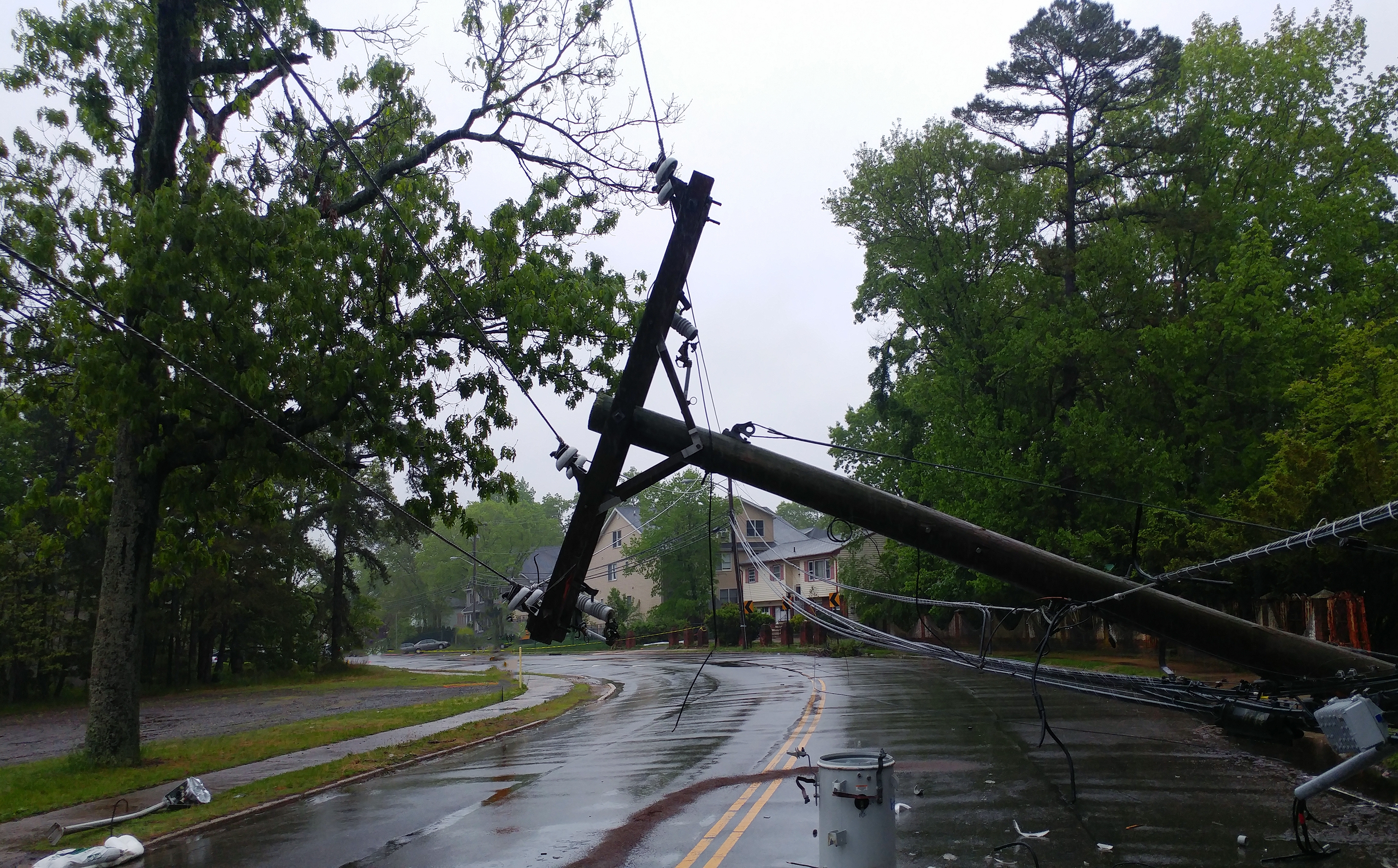
Figure 6 – Downed power lines resulting from a severe storm and high winds—common damage following tornadoes and hurricanes in the Southeast.
Weather Dynamics Across the Mid-Atlantic & Northeast
The Mid-Atlantic and Northeast states generally include the middle and Northern Appalachian states, as well as the megalopolis comprising Baltimore, Washington D.C., and Philadelphia, and New England. This area is known for its diverse climate regions, including mountainous climates, warm and humid areas, maritime climates, and cool, continental climates.
In coastal areas of the Mid-Atlantic and the Northeast, tropical cyclones are a familiar threat. One of the most notable in recent history is Hurricane Sandy, which carried both tropical and extratropical characteristics as it bombarded the Mid-Atlantic. Mariners especially should be cautious offshore of the coastline, as both strong windstorms and tropical storms can cause high winds and high swells.
Heavy snow is common along the eastern shores of the Great Lakes, especially Lake Erie and Lake Ontario, in places such as Buffalo and Watertown, New York. This is known as lake-effect snow, which is caused by locally warmer lake water enhancing snowfall production as winter storm bands move overhead.
New England is also home to the proclaimed “Home of the World’s Worst Weather” at Mount Washington Observatory in New Hampshire. While the weather observed at the summit of Mount Washington is indeed thrilling, including routine 100 MPH and greater winds, it most likely isn’t the “worst weather in the world.”
Insurance carriers conducting business along the East Coast and the US Northeast should be aware of both wintertime hazards in heavy snow-prone areas, especially downwind of the Great Lakes, and in mountainous areas. Likewise, a sharp eye on the Atlantic Ocean is always recommended, especially in coastal areas. Furthermore, populated regions from the District of Columbia metro area north through Boston experience many windy days, which can result in downed trees, injury, and even fatalities, though this tree damage typically occurs at wind speeds that are sub-severe.
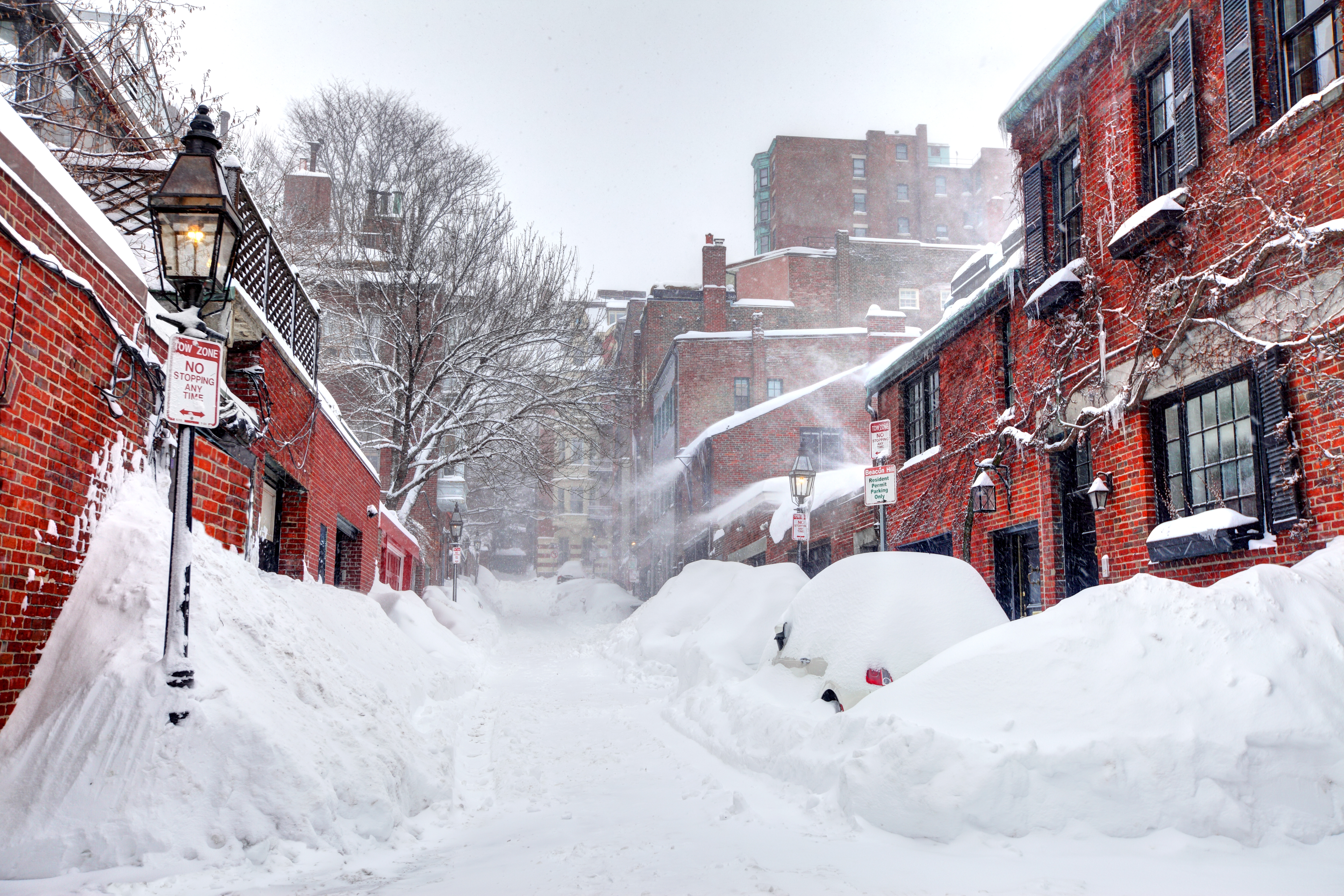
Figure 7 – Heavy snowfall covering vehicles and obstructing homes and roads in Boston, Massachusetts during the Boston Blizzard of 2015.
Conclusion: How Forensic Meteorologists Can Help
The United States is home to a wide variety of weather events and climate zones, thanks to its continent-spanning size and many geological features such as towering mountain ranges, a warm Gulf of Mexico, and the Great Lakes. In fact, with this diversity of weather, the National Weather Service (NWS) has 122 different weather forecast offices across the United States, each office specializing in the weather conditions in their respective geographical area.
Weather can be dangerous from coast to coast. The daily checking of weather forecasts and proper weather planning and monitoring can save lives. One of the best ways to monitor the weather is through an official source, such as the National Weather Service, found here: https://www.weather.gov/.
When considering weather risk, consulting with a credentialled meteorologist is important. Weather databases online have many documented limitations, but experienced meteorologists can effectively communicate weather risk from a scientific perspective. Likewise, following insurance claims, credentialled forensic meteorologists can assist insurance carriers in determining the weather conditions that truly occurred at a loss location, whether due to heavy precipitation, freezing temperatures, severe weather, flooding, or tropical cyclones. Forensic meteorologists are often experienced in testifying in courts of law in the event that storm damage insurance claim disputes arise.
Acknowledgments
We would like to thank our colleagues Daniel Schreiber, Kaj O’Mara, Andria Savill, and Anna Head for providing insight and expertise that greatly assisted this research.
Dan Schreiber is a Vice President in J.S. Held’s Forensic Meteorology service line. He is a Certified Consulting Meteorologist with years of experience in military, aviation, and severe weather operations. Mr. Schreiber has provided consulting and expert services for both plaintiff and defense law firms, as well as insurance adjusters, appraisers, umpires, and policyholders throughout North America. He has been consulted and/or retained as an expert in over 850 matters and has testified in both depositions and during trials in state and federal courts. He regularly plays an integral role in multi-million-dollar insurance disputes and injury/wrongful death lawsuits from coast to coast. Before joining J.S. Held, Dan was a highly successful meteorology business owner.
Dan can be reached at daniel.schreiber@jsheld.com or +1 830 453-0255.
Kaj O’Mara is an Assistant Chief Meteorologist in J.S. Held’s Forensic Meteorology service line. He is a Certified Consulting Meteorologist (CCM) with over 16 years of experience in operational meteorology. An elite communicator with dual meteorology certifications, Mr. O’Mara brought his expertise in severe weather to over one million residents across eastern Iowa during his tenure as an Emmy Award-winning Certified Broadcast Meteorologist (CBM). Throughout his tenure in the broadcast industry, Mr. O’Mara’s expertise in a wide range of hazardous and impactful weather were widely utilized by the agricultural and transportation industries, as well as revered by numerous school districts, college campuses, and sports teams. Mr. O’Mara routinely employed his role as a National Weather Service Weather Ready Nation Ambassador across numerous municipalities, school districts, and emergency management sectors.
Kaj can be reached at kaj.omara@jsheld.com or +1 319 250 7797.
Andria Savill is a Meteorology Consultant in J.S. Held’s Forensic Meteorology service line with over six years of experience in the weather industry. Well-versed in both operational and forensic meteorology, she has provided severe weather data analysis before, during, and after severe weather occurs. In addition to her extensive skills in forensic meteorology, Mrs. Savill has experience working in the marine and broadcast meteorology sectors, giving her a diverse and extensive range of weather knowledge and expertise. As a Meteorology Consultant, she provides forensic meteorology expertise for a variety of clients in the legal and insurance industries across the United States.
Andria can be reached at andria.savill@jsheld.com or +1 405 288 5823.
Anna Head is a Meteorology Consultant in J.S. Held’s Forensic Meteorology service line with over four years of experience in the weather industry. With experience in both broadcast and forensic meteorology, Anna is an expert at forecasting, communicating, and historically analyzing a wide variety of weather events, with graduate-level research experience specifically in tornadoes. In addition to her television and forensic meteorology consulting experience, Mrs. Head is also significantly engaged in educating and integrating with first responders and emergency management professionals regarding matters of severe weather preparedness and safety.
Anna can be reached at anna.head@jsheld.com or +1 762 237 7093.
This publication is for educational and general information purposes only. It may contain errors and is provided as is. It is not intended as specific advice, legal, or otherwise. Opinions and views are not necessarily those of J.S. Held or its affiliates and it should not be presumed that J.S. Held subscribes to any particular method, interpretation, or analysis merely because it appears in this publication. We disclaim any representation and/or warranty regarding the accuracy, timeliness, quality, or applicability of any of the contents. You should not act, or fail to act, in reliance on this publication and we disclaim all liability in respect to such actions or failure to act. We assume no responsibility for information contained in this publication and disclaim all liability and damages in respect to such information. This publication is not a substitute for competent legal advice. The content herein may be updated or otherwise modified without notice.




Leave a Reply